This winter, over the course of a month, I logged into a Zoom Room filled with fourteen other creative leaders across the country. As a group, we spanned ages, geography, discipline, experience, race, gender, sexual orientation, and so much more. What we shared was the desire to brainstorm big ideas around how the arts and social justice intersect.
In my 20+ year career as an arts leader, I’ve rarely been able to take time to truly pause, step away from my day-to-day work, and think about the future of our world. Something powerful happens when we are given intentional time and space to dig into issues and questions together. We move from scarcity to explore abundance. Our innate creativity comes into play. And we start to think bigger.
Our conversations in that Zoom room about social justice and the arts were aspirational. How do we break apart structures that enforce scarcity and inequity? How do we transform our thinking, our sector, our systems? And what would it take to invest in a future where there is understanding of difference, space for curiosity, and a celebration of welcoming?
Across America and the Native Nations that share this geography, so many people and communities are doing the work of advancing social justice. As I left these conversations, I was—and am—struck by the need to think big. How might large-scale investment in these creative people and projects change our world? And how might Arts Midwest rise to the occasion to support and connect these efforts?
The work of social justice lives at the center of culture and daily life. It’s intersectional and multidimensional. It’s both hyper-local and broadly global. For that reason, if you ask fifteen people how to define social justice, you’ll get fifteen different answers.
After our conversations, we asked our Arts + Social Justice Advisors to share some of their thoughts on who and what inspires them to do this work. I hope you’ll explore their responses, and perhaps set aside some time for your own ideas. It’s powerful stuff.
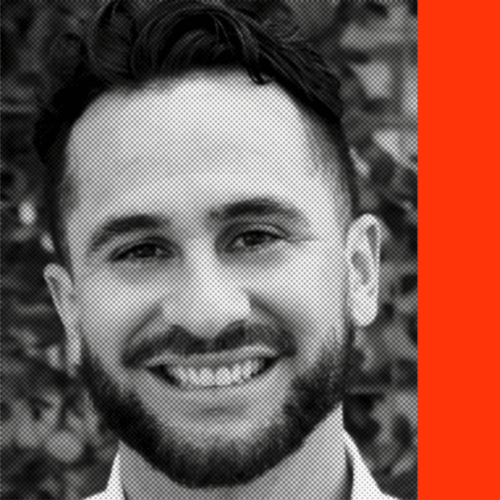
Alberto Mejia
Deputy Director, National Association of Latino Arts & Cultures
“The Latinx cultural sector has a growing, critical role to play for a more racially just, economically inclusive and culturally vibrant future.”
Alberto Mejia is the Deputy Director at NALAC. He holds a Masters in Public Administration from the University of Washington and a BA in American Cultural Studies and Political Science from Fairhaven College. Prior to joining NALAC in 2020, he served as manager of Cultural Funding & Investments with the City of Austin, a senior director of Community Programs at Creative Action, Manager of the Dougherty Arts Center, Executive Director of Youngstown Cultural Arts Center in Seattle, WA and Community Engagement Manager at MoPOP in Seattle, WA.
Alberto is an alumnus of NALAC’s Advocacy Leadership Institute (ALI) and has served as panelist for local to national grant making programs including ARTPLACE and NEA Our Town. Alberto is active in cultural policy issues & dialogue.
Alberto is an artist in the in hip-hop genre and devotes time to the practice of indigenous cultural tradition, community building & dance.
Learn more about Alberto Meija in this NALAC announce.

Anika Kwinana
Director of Social Responsibility and Inclusion, WESTAF
“By centering the rich voices and experiences of arts leaders in rural and urban communities throughout the West, we are ensuring that a diverse arts community leads change.”
Anika Kwinana is WESTAF’s director of social responsibility and inclusion. In this role, Anika leads the development of equity-centered experiences that connect and inspire artists, leaders and communities to build a more inclusive arts and culture sector. Prior to taking this role at WESTAF, Anika served as manager of national education initiatives at the John F. Kennedy Center for the Performing Arts where she ensured that arts professionals were equipped with relevant professional learning and support as they sought to provide equitable access to the arts among public school students.
Anika has worked with a number of arts organizations as a stage manager, producer, gallery coordinator, and subscriptions sales associate. Anika’s performing arts career began in 2008 in Gqebera, South Africa, where she was the music and arts director of a large religious community until returning to the United States in 2014. There she supported 100+ volunteer artists and performed, produced and co-wrote two live productions.
Anika is chair of the Arts Administrators of Color Network; chair of the Arlington County Commission for the Arts and was a member of artEquity’s first BIPOC Leadership Circle cohort.
Anika earned her bachelor’s degree in political science from Howard University and a master’s degree in arts management from George Mason University, where her capstone focused on equity in arts organization leadership. She also holds a master’s degree in public anthropology from American University and a postgraduate degree in management from the University of Stellenbosch in South Africa.
Learn more about Anika Kwinana in this WESTAF announce.
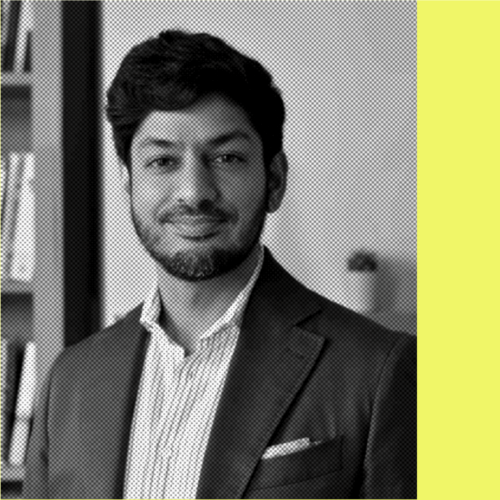
Asad Ali Jafri
Independent Cultural Producer
“Artists interpret our world(s) and lived experiences. As long as communities face injustice and inequity, the arts will remain a platform to create social changes we desperately need.”
Asad Ali Jafri is a cultural producer, community organizer and interdisciplinary artist. Using a grassroots approach and global perspective, Asad connects artists and communities across imagined boundaries to create meaningful engagements and experiences. Asad has over two decades of experience honing an intentional and holistic practice that allows him to take on the role of artist and administrator, curator and producer, educator and organizer, mentor and strategist.
Q: Who/what inspires you to do this work?
I see this work as a deep calling, one which is so aligned with my life and inherent values that I cannot imagine being able to do anything else. I’m inspired by my ancestors from several generations ago who lost their lives fighting for justice. This helps shape my worldview. I’m inspired by my parents and grandparents who went through the struggles of migration as results of colonialism and war, while trying to do what would be most beneficial for future generations. I’m inspired by the generations that are yet to come, and hoping that I can play a small part in creating change that will create a more just world for them to live in.
Q: Where would you like to see more funding in your creative communities?
I would like to see more funding directly to individuals – artists, cultural workers, community organizers. Often the people making change on the ground are underpaid, overworked and on the verge of burnout. We can help directly by eliminating unnecessary barriers to direct funding and other types of direct support.
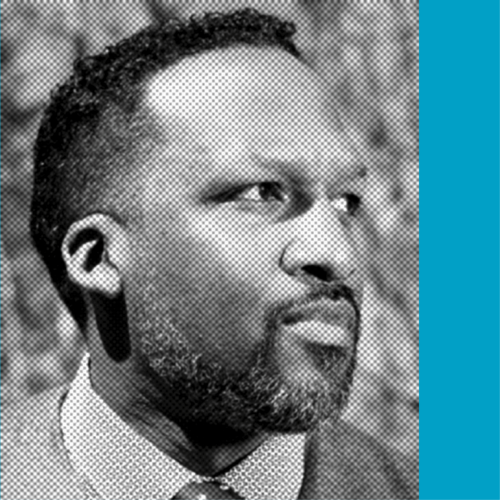
Carlton Turner
Co-Founder, Sipp Culture
“Artists are essential to building a new world, because most other people are fixed in doing it the way that it’s been done. Creativity is essential to the development of 21st century society, and artists are most prone to do that because of the way that we can access creativity”
Carlton Turner is an artist, agriculturalist, lecturer, researcher and co-founder of the Mississippi Center for Cultural Production (Sipp Culture). Sipp Culture uses food and story to support rural community, cultural, social and economic development in his hometown of Utica, Mississippi where his family has been for eight generations.
Carlton currently serves on the board of First People’s Fund, Imagining America, Project South, the National Black Food and Justice Alliance and Grantmakers in the Arts. Carlton is a member of the We Shall Overcome Fund Advisory Committee at the Highlander Center for Research and Education and is the former Executive Director of Alternate ROOTS. He is also a founding partner of the Intercultural Leadership Institute.
Carlton Turner is also co-founder and co-artistic director, along with his brother Maurice Turner, of the group M.U.G.A.B.E.E. (Men Under Guidance Acting Before Early Extinction). M.U.G.A.B.E.E. is a Mississippi-based performing arts group that blends of jazz, hip-hop, spoken word poetry and soul music together with non-traditional storytelling. His current work is River Sols, a new play being developed in collaboration with Pangea World Theater that explores race, identity, class, faith, and difference across African American and South Asian communities through embodiment of a river.
He is also a member of the Rural Wealth Lab at RUPRI (Rural Policy Research Institute) and an advisor to the Kresge Foundation’s Fresh Lo Initiative. Carlton was awarded the Sidney Yates Award for Advocacy in the Performing Arts by the Association of Performing Arts Professionals in 2018. Carlton has also received the M. Edgar Rosenblum award for outstanding contribution to Ensemble Theater (2011) and the Otto René Castillo Awards for Political Theatre (2015).
Learn more about Carlton’s work in this Art Restart Interview.
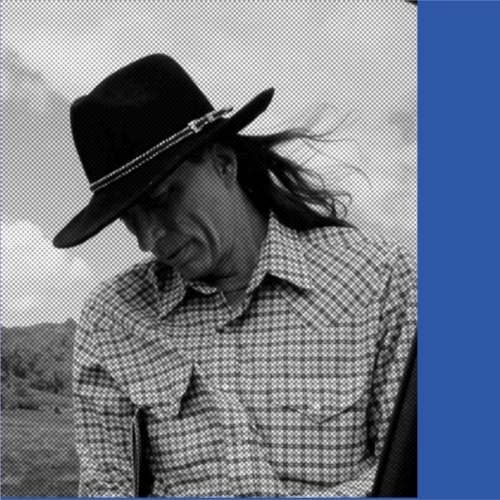
Dr. Craig Howe
Founder & Director, Center for American Indian Research and Native Studies
“Why do I think the arts have the power to create social change? Because artists and other creatives are often among the first persons prisoned and/or killed by dictators and despots. Because books are burned. Because of flags and anthems. Because … “
Craig Howe, founder and Director of the Center for American Indian Research and Native Studies (CAIRNS), earned a Ph.D. in architecture and anthropology from the University of Michigan. He served as Deputy Assistant Director for Cultural Resources at the National Museum of the American Indian, Smithsonian Institution in Washington, DC, and Director of the D’Arcy McNickle Center for American Indian History at the Newberry Library in Chicago. Howe has authored articles and book chapters on numerous topics, including tribal histories, Native studies, museum exhibitions, and community collaborations. He has developed innovative tribal histories projects and creative museum exhibitions, lectures on American Indian topics across the U.S., and provides professional development and cultural awareness training to schools and organizations. Howe was raised and lives on his family’s cattle ranch in the Lacreek District of the Pine Ridge Reservation where he is designing and building Wingsprings, an architecturally unique retreat and conference center that is featured in New Architecture on Indigenous Lands. He is a citizen of the Oglala Sioux Tribe.
Q: Who/what inspires you to do this work?
Two persons come immediately to mind: Oscar Howe and Grandma Smith.
Oscar Howe created a corpus of groundbreaking artworks over the course of his career. Yet perhaps his most important piece was a 266-word letter he wrote on April 18, 1958, to Jeanne Snodgrass, Curator of American Indian Art at the Philbrook Art Center, now the Philbrook Musuem of Art. Howe had entered a painting in the Art Center’s annual show, and it had been rejected because it didn’t conform to the mainstream definition of American Indian art. In response to the Art Center’s decision, his letter began with a direct challenge of the competence of the museum’s experts: “Who ever said, that my paintings are not in the traditional Indian style, has poor knowledge of Indian Art indeed.” That was his opening sentence!
Then he followed with these three explanatory sentences: “There is much more to Indian Art, than pretty, stylized pictures. There was also power and strength and individualism (emotional and intellectual insight) in the old Indian paintings. Every bit in my paintings is a true studied fact of Indian paintings.” Then he confronted the arrogance and privilege of the art world, paralleling how it treated American Indian artists with the way the federal government treated American Indians: “We are to be herded like a bunch of sheep, with no right for individualism, dictated as the Indian has always been, put on reservations and treated like a child, and only the White Man knows what is best for him. Now, even in Art, ‘You little child do what we think is best for you, nothing different.’” That was him speaking truth to power. Then, he followed with these assertions: “Well, I am not going to stand for it. Indian Art can compete with any Art in the world, but not as a suppressed Art.”
Conscious of the myriad inequities and injustices foisted upon American Indians, he redirected attention away from “Art” in his next three personalized sentences: “I see so much of the mismanagement and treatment of my people. It makes me cry inside to look at these poor people. My father died there about three years ago in a little shack, my two brothers still living there in shacks, never enough to eat, never enough clothing, treated as second class citizens.” Then his poignant closing: “This is one of the reasons I have tried to keep the fine ways and culture of my forefathers alive. But one could easily turn to become a social protest painter. I only hope, the Art World will not be one more contributor to holding us in chains.” Two hundred sixty-six words. An inspiring manifesto from the moment I first read it over four decades ago.
Grandma Smith is my Mom’s Mom, born in 1906 and died in 1988.
She never had much in the traditional western way of reckoning, being more along the economic lines of Oscar Howe’s description of his father and brothers. Being called a “dirty Indian” as a child stuck with her her whole life. Yet we cannot recall her speaking bad about anyone. Nearly everyone had and has fond memories of Gramma Vi. She was a grassroots artist, a country creative who could sew almost anything with almost nothing, could feed her family and their friends with almost nothing, could make toy animals with bones and play horses with sticks, strings and cloth scraps, and wrote poetry with number 2 pencils in lined tablets. She was a quiet, unassuming, under-schooled yet highly-educated and gracious Renaissance woman. She lived an artful life that inspires me to seek the positive potential in all that surrounds me.
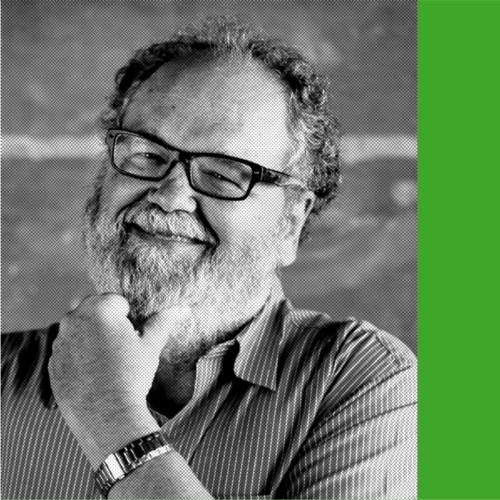
Dee Davis
Founder & President, Center for Rural Strategies
“Good art changes the people who witness it or who are part of making it. I would like to see philanthropy that is open to ambitious attempts to use the arts and less concerned about medium or artistic discipline.”
Dee Davis is the founder and president of the Center for Rural Strategies.
Dee has helped design and lead national public information campaigns on topics as diverse as commercial television programming and federal banking policy.
Dee began his media career in 1973 as a trainee at Appalshop, an arts and cultural center devoted to exploring Appalachian life and social issues in Whitesburg, Kentucky. As Appalshop’s executive producer, the organization created more than 50 public TV documentaries, established a media training program for Appalachian youth, and launched initiatives that use media as a strategic tool in organization and development.
Dee is the chair of the National Rural Assembly steering committee; he is a member of the Rural Advisory Committee of the Local Initiatives Support Corporation, Fund for Innovative Television, and Feral Arts of Brisbane, Australia. He is also a member of the Institute for Rural Journalism’s national advisory board. He is a member of the Board of Directors for the Institute for Work and the Economy. Dee is a member of the American Academy of Arts and Sciences commission on the Practice of Democratic Citizenship.
Dee is also the former Chair of the board of directors of Mary Reynolds Babcock Foundation.
Q: Who/what inspires you to do this work?
I was standing in line to meet the writer Rick Bragg. Guy in front of me asked him why he wrote the book about his father after saying he wouldn’t. Bragg hemmed and hawed and said his dad’s friends were getting old. And for some reason I just popped off and said, “Because there’s nothing better than being with old men.”
He looked at me as if he was stunned and said, “That’s exactly right.” I have always liked to be in the presence of old men. Before I was one. Old activists, musicians, journalists, novelists, politicians all gave me time and told me stories that I’ve tried to hold dear. Cultural work is about finding your sense of place in time. I draw purpose from what old guys taught me.
Q: Why do you think the arts have the power to create social change?
Movies, music, literature have often catalyzed social change. And change is cultural. At its best performance is a kind of call and response interaction where both audience and performers open themselves to be changed.
Q: What is an arts experience that opened your eyes to the power of creativity to repair communities, advance social justice and/or catalyze change?
I’ve lucked into being at a lot of extraordinary performances. The one that haunts me still is seeing Traveling Jewish Theatre’s “The Last Yiddish Poet” at the Appalshop theater in Whitesburg KY, my hometown. Early 90’s maybe? You would imagine that there were great gaps in between the experiences and sensibilities of the Polish ghettos and the Appalachian hollers, but no one left that building that night unchanged. No one felt unconnected. All bells were rung.
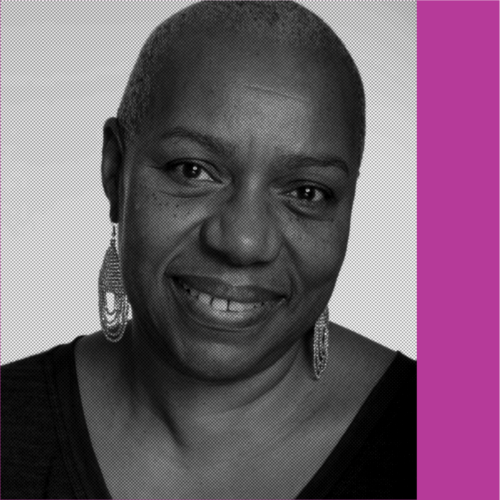
Gail Boyd
President, Gail Boyd Artist Management
“Creatives translate what we are going through. Creatives have been given a gift and they regift their vision to us. We often don’t realize it until we see it in the rear view mirror, but often what they create is a beacon out of circumstances.”
Gail Boyd is President of Gail W. Boyd, P.C., an entertainment law firm, and Gail Boyd Artist Management, a wholly owned company of the law firm. She is a graduate of De Paul University and De Paul University School of Law. She was a founding partner in Boyd, Staton and Cave, the first African American female law firm in New York. Gail has been involved in entertainment law since 1976.
Gail presently serves on the Boards of the Pan African Center for Empowerment, the Martin Luther King/Coretta Scott King Memorial, The International Society of Jazz Composers and Arrangers, and the North American Performing Arts Managers and Agents (NAPAMA). In October 2019, she was elected President of NAPAMA and is now serving her second term. She served on the Board of WBGO FM Radio in New York as well as the Noel Pointer Foundation. For nearly 20 years, she served as Chair of the Board of Brooklyn Legal Services.
In 2017, Gail formed a Facebook Group entitled “Alternative Venues for Jazz” to provide a virtual space for musicians to share information about performance spaces. When the pandemic of Covid-19 hit in 2020, Gail converted the page to a virtual meeting space, where musicians and industry professionals come on to the page to share their journey. The page now boasts more than 8300 members. As a result, Gail was named by the Jazz Journalists Association as a “Jazz Hero” and was nominated for the Sidney R. Yates Award for Outstanding Advocacy on behalf of the Performing Arts by the Association of Performing Arts Professionals (APAP).
Q: Who/what inspires you to do this work?
My mantra was always that I am meant to assist in preserving jazz as an art form by helping musicians achieve their goals. I have expanded that to include all creatives as well as it has become clear that we are all working within the same ecosystem and that ecosystem must be supported for any one of us to thrive.
Q: Where would you like to see more funding in your creative communities?
I would like to see more funding for artists who are doing the work daily but because of economic necessity don’t have the knowledge, skills or ability to apply for funding and therefore are doing the work without the appropriate support. Discovering those who are toiling in that manner would really benefit from financial support.
Q: What is a (performing) arts experience that opened your eyes to the power of creativity to repair communities, advance social justice and/ or catalyze change?
Two of my clients recently used their gifts to advance social justice. Jade Solomon Curtis (as a result of funding by the National Dance Project) workshopped and toured a work entitled “Black Like Me: An Exploration of the Word Nigger”. It is her contention that the word is blood stained and cannot be sanitized and told her story through a series of five narratives. She insisted that there be a separate youth performance for each city visited and had the opportunity to have intimate conversations with the students to uncover the trauma buried in that word. I witnessed lives changed.
Lakecia Benjamin, a recent recipient of a Mid Atlantic Arts Foundation Tour Grant – created a jazz recording celebrating the lives not only of John Coltrane, but Alice Coltrane. She recorded an equal number of songs of each recognizing the tremendous talent and contribution of Alice. She sought out and recorded with elder jazz musicians who knew and had recorded with both John and Alice. She then sought out and recorded those musicians who had mentored her or at least she studied and looked up to and added them to the recording. Finally, she sought out her peers who were already leaders in their own right and added them to the recording. I love that she put the legacy of their music using those three segments of jazz society. The album was rated among the top 20 albums released in 2020 and she has toured that music all over the world.

Indira Goodwine
Program Director for Dance, New England Foundation for the Arts
“I advocate for the dance community through a nuanced framework that propels the field forward with a focus on activism, equity, creativity, and engagement.”
Indira Goodwine is the Program Director for Dance at the New England Foundation for the Arts (NEFA) where she directs NEFA’s National Dance Project and major dance initiatives in New England. With a dual background in dance and arts administration, she previously served as the Managing Director of Camille A. Brown & Dancers (CABD) where she shepherded the organization through the attainment of 501©(3) nonprofit status, established the organization’s founding Board of Directors, enhanced the institutional and individual fundraising efforts, and provided oversight of the development, implementation, and continued growth of CABD’s dance engagement program, “EVERY BODY MOVE.”
Prior to her leadership role with CABD, Indira held various positions at Harlem Stage that deepened community partnerships and supported the organization’s annual dance program, “E-Moves.”
She is a 2016 New York Community Trust Fellow, American Express Leadership Academy Alumna, and Dance/USA DILT Program Alumna. She currently serves on the Advisory Committee for The Black Genius Foundation, Grantmakers in the Arts’ Individual Artist Committee, and is a member of Women of Color in the Arts (WOCA). Her contributions to the dance field via panels and other advocacy efforts have been acknowledged in the form of notable awards and citations.
Indira holds a BFA in Dance Performance from Florida State University and an MA in Performing Arts Administration from New York University.
Learn more about Indira’s work in this NEFA announcement.

Lisa Gold
Executive Director, Asian American Arts Alliance
“While the phrase “you can’t be what you can’t see” may sound trite, for people who have never seen their lives accurately represented on screen or seen someone who looks like them in a position of power, it resonates in many ways. Normalizing the representation of people of color in popular media (reflecting the true diversity of communities) helps reduce negative stereotypes and bias. And by advocating for a fairer, more equitable playing field, we all win.”
Lisa has over two decades of experience in arts management, development, programming, community outreach, and public relations. She has served as the director of public engagement at the Hirshhorn Museum and Sculpture Garden in Washington, DC; the executive director of Washington Project for the Arts; the public relations director at the Drawing Center in New York; and director of development and communications at Socrates Sculpture Park in Long Island City. Lisa is recognized as a strong advocate for creative producers and has developed inclusive programming and outreach initiatives throughout her career.
Q: Where would you like to see more funding in your creative communities?
I would like to see more support for small organizations, for training leaders, for in-language programs that serve communities, for art forms that are not understood or viewed as “folk art.” I know that many arts groups and artists may not have the capacity or training to compete with PWIs for grants and often feel discouraged from applying due to a lack of confidence that their application will be evaluated fairly so it’s imperative that funders recognize the value of these creators, what they bring to the community and the arts sector as a whole, and find ways to invite them in and support their work.
Q: Why do you think the arts have the power to create social change?
Art has the capacity to touch us in ways that words often can’t. It can cross boundaries of language and culture. It can move us in ways that an intellectual argument cannot. 50 years later, people are still singing “What’s Going On?” and it still resonates.
Q: What is an arts experience that opened your eyes to the power of creativity to repair communities, advance social justice and/ or catalyze change?
I recently saw Kristina Wong’s one-woman show, Sweatshop Overlord, at New York Theater Workshop (actually, I saw it multiple times). Kristina and Chay Yew weave a touching, funny, angry, cathartic piece about the Auntie Sewing Squad, a group of volunteers she assembled during the pandemic to sew face masks. They come together in a moment of desperation (and elastic shortage) to provide PPE to essential workers and vulnerable communities, demonstrating the power of collective care and mutual aid.
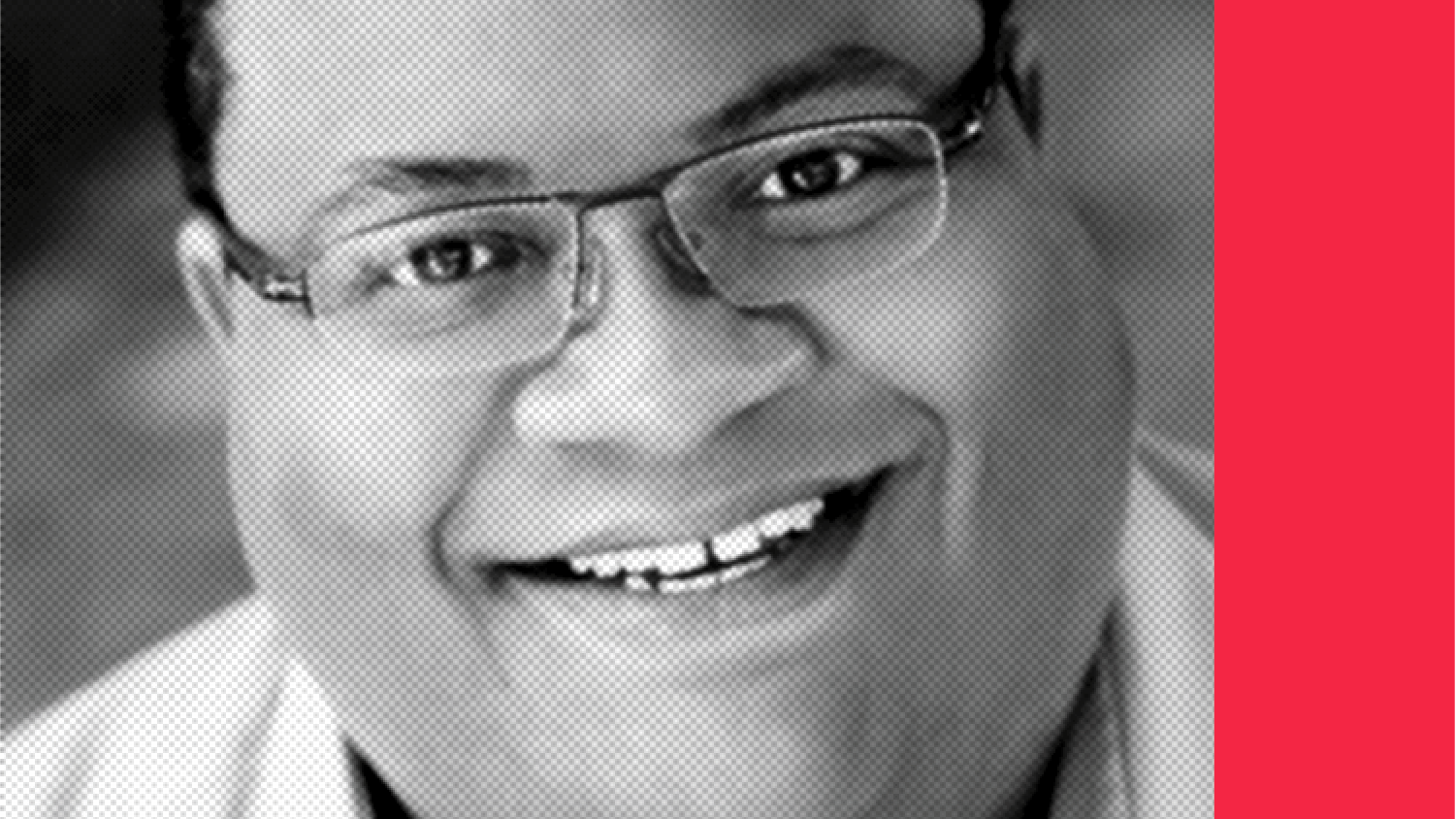
Martin Jones
Studio Director, Austin Film Society
“The arts are the vessel that takes our communities into the future. It would be wonderful to see more funding for digital media making for young people, adults, and our elders.”
Martin Jones is a 2x Emmy® Award nominated producer, creative innovator and executive who specializes in producing and directing diverse teams of talented artists and technicians to create memorable, and entertaining multimedia content. He is the Studio Director for Austin Studios which is operated by the Austin Film Society, one of the nation’s leading media nonprofits.
Before relocating to Austin, Jones was CEO for MetroEast Community Media which empowers members of the public to receive training and access to cable television, and digital technology. I produced national commercials for major global brands like Jeep, Chrysler, Chevrolet, Turner Networks (tbs), Grolsch Beer, and Kmart.
As CEO of MetroEast Community Media, a 35 year old nonprofit television network specializing in digital inclusion for underserved communities, he led the diversification of revenue and rebranding. The studios, edit bays, and vast equipment are shared with the public to empower them to broadcast their messages to metro Portland, and the world.
Q: Who/what inspires you to do this work?
I have been blessed to pursue and experience the film industry career of my dreams because of the access I had to several local arts groups who welcomed me as a creative teenager.
Q: What is an arts experience that opened your eyes to the power of creativity to repair communities, advance social justice and/ or catalyze change?
As a teenager, I saw the films of several West African directors, and I got a chance to meet them in person. Their films took me to another continent, and introduced me to new cultures. Getting to know them in person added a dimension of amazement that really showed how powerful the medium of film can be and its global impact.
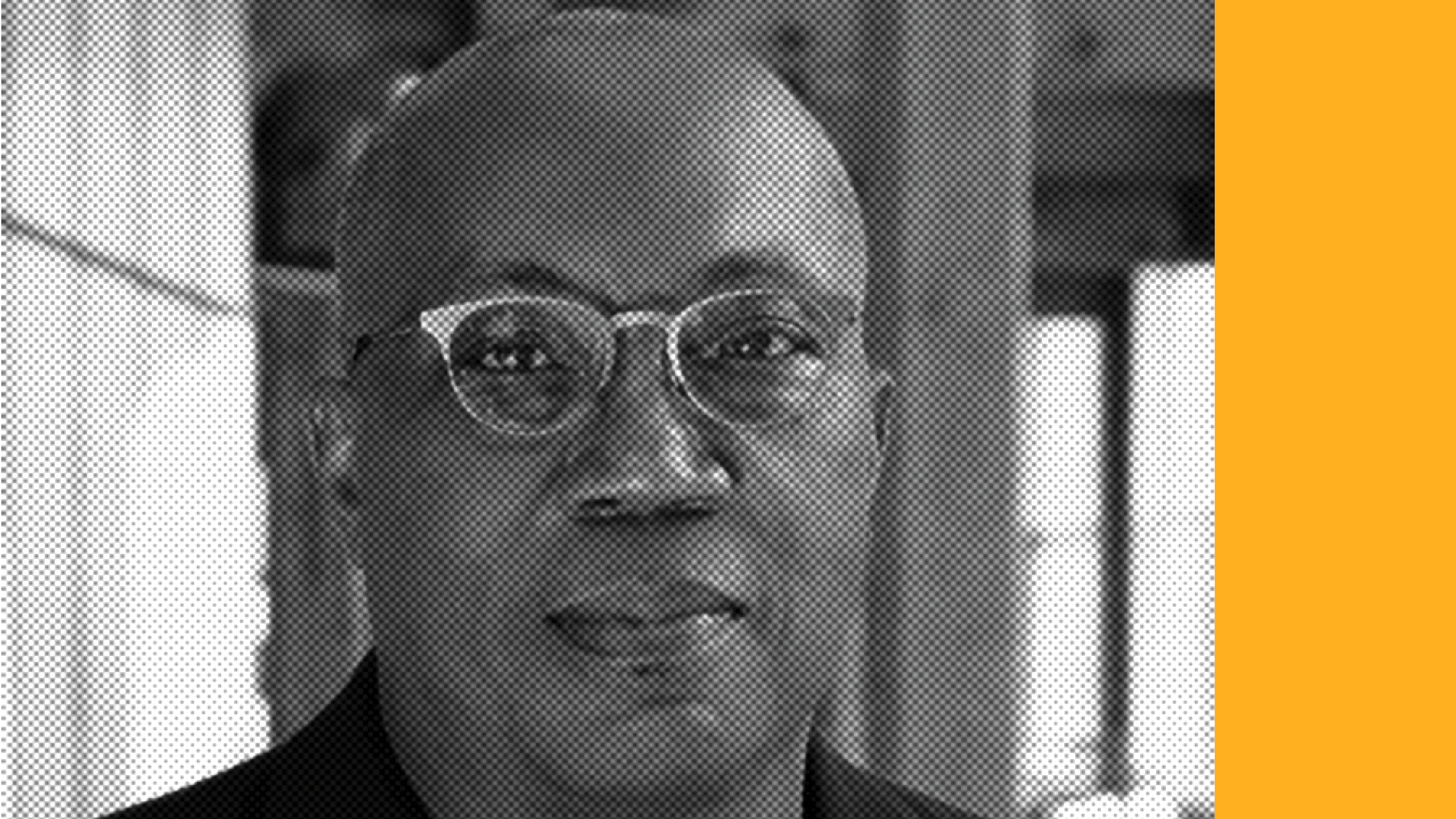
Neil Barclay
President & CEO, Charles H. Wright Museum of African American History
“Resources are always an issue at first voice institutions that speak for communities of color. But I think it’s becoming clear that we need these first voice institutions to talk about complex issues from the perspective of lived experience.”
In January of 2019 Barclay was selected to lead the Charles H. Wright Museum of African American History as its president and CEO.
A former attorney, Barclay was most recently President and CEO of the Contemporary Arts Center (CAC) in New Orleans. During his five-year tenure, the institution’s budget increased by more than 40 percent including lead gifts from some of the nation’s leading arts philanthropists.
Barclay served for seven years as associate director of the Performing Arts Center for the University of Texas at Austin and is the founding president and CEO of Pittsburgh’s August Wilson Center. Additionally, he was instrumental in the historic capital renovation planning for Los Angeles’ Vision Theater, originally built by Howard Hughes and currently in the final stages of development for the city’s Department of Cultural Affairs.
A leading national presenter of contemporary performing and visual arts, Barclay served on the Board of Directors of the Association of Arts Professionals for 9 years including four years as its Vice President. He currently chairs the board of South Arts one of the nation’s six regional arts organizations.
Since 2018, he has served as a member of the College of Communications and Fine Arts Advisory Board for Loyola Marymount University, Los Angeles, his undergraduate and law school alma mater.
Learn more about Neil’s work in this American Black Journal episode.
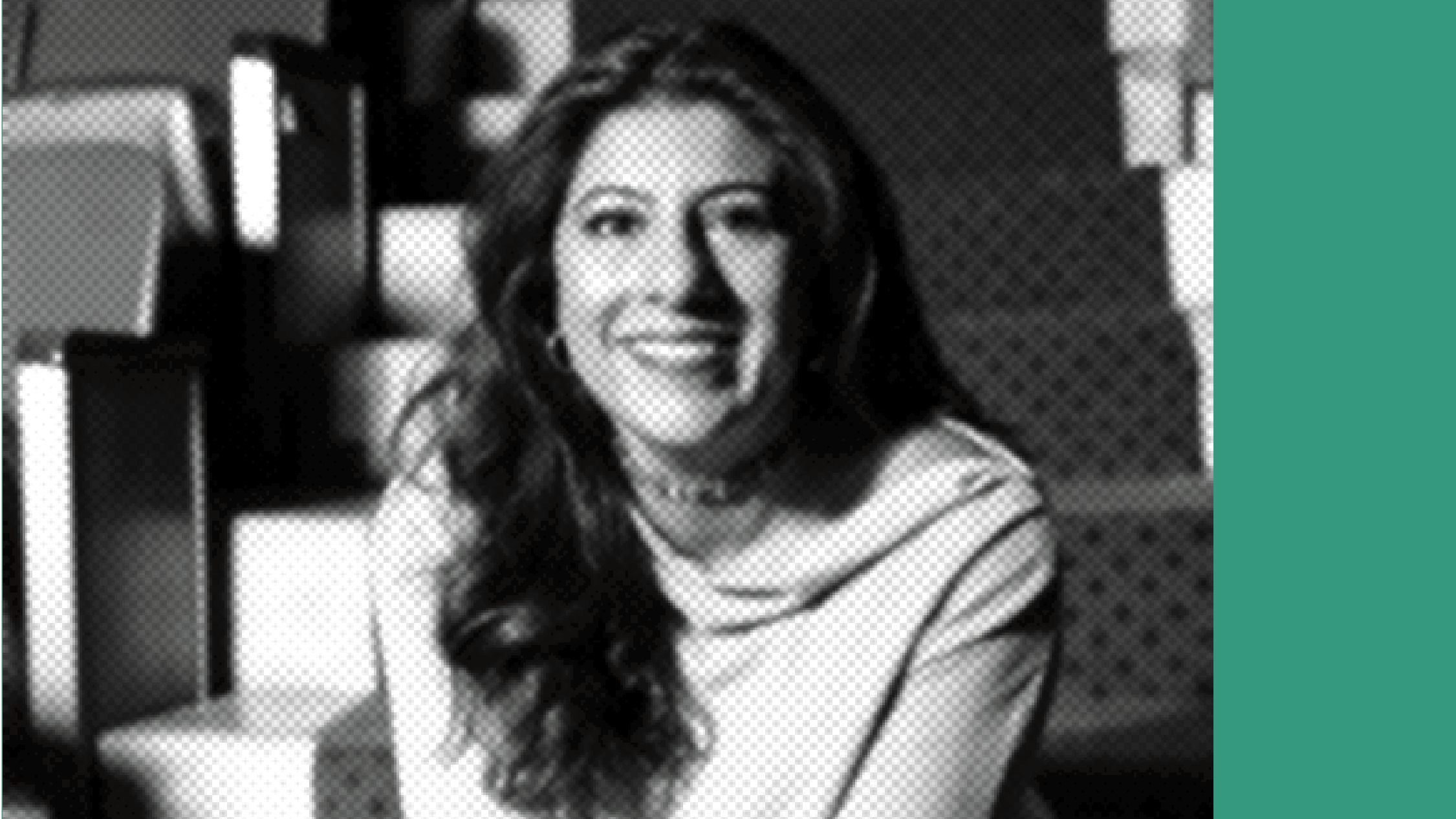
Priti Ghandi
Artistic Director, Portland Opera
“I fell in love with opera from the moment I sang my very first aria. It has given me so much joy to discover how much the voice can lift us up, and I want nothing more than to help others discover this too.”
Priti Gandhi joined Portland Opera in the fall of 2021 as an artistic and strategic leader, as part of a new collaborative leadership team structure for the company. Her role leads the discussions for season planning, casting, developing the young artist program, and oversight of the company’s community engagement and educational programs.
Previous to her post in Portland, she was Vice President of Artistic at Minnesota Opera, where she advised on topics related to company programming, casting, and commissions related to the New Works Initiative. She also created new processes for company-wide conversations regarding diversity in traditional narratives and casting – most notably, exploring the growing discussion of the relevance of the operatic canon in the evolving lens of today – and has become a frequent contributor to panels, podcasts, and published articles regarding the ongoing dialogue of new perspectives in industry-wide EDI work.
She is also passionate about connecting to singers regarding career paths and resources, as well as creating more compassionate spaces for artists in the industry – speaking on panels with Opera America, National Endowment for the Arts, The Women’s Opera Network (OA), and various opera companies throughout the region.
In her performance career, she appeared with the New York Philharmonic, Los Angeles Opera, Seattle Opera, Theatre du Chatelet in Paris, the Prague Estates Theatre, Philadelphia Orchestra, and San Francisco Opera, among others. Ms. Gandhi graduated with a BA in communications and a minor in theatre from the University of California, San Diego. An alumna of programs at Cleveland Opera and San Diego Opera, Gandhi is also an amateur painter and flamenco dancer.
Learn more about Priti’s work on the Portland Opera website.

Sean Dorsey
Artistic Director, Sean Dorsey Dance and Fresh Meat Productions
“As an artist and activist, I’ve learned that the crucible for transformation happens through personal, shared, felt experience. Whether we’re watching a dance film online or watching dancers on stage, that experience gives us an embodied, visceral experience. It involves our breath, our heart, our muscles contracting in empathic reaction.”
Sean Dorsey is a white, transgender, queer, disabled/Hard-of-hearing choreographer, dancer, writer, educator and activist. As a longtime social practice artist, he creates dance-theater work based on the engagement of local communities. Sean is Founding Director of Fresh Meats Productions (@freshmeatsf), which invests in the creative expression and cultural leadership of transgender and gender non-conforming communities.
Dorsey is a 2020 Doris Duke Artist, an inaugural Dance/USA Artist Fellow, and has been awarded the Goldie Award for Performance, and five Isadora Duncan Dance Awards.
Sean Dorsey Dance is currently working on a new multi-year project: THE LOST ART OF DREAMING which investigates and creates expansive Future thinking and imagination. The project includes movement research, community conversations, dance films, DREAM LAB workshops and a world premiere performance in Fall 2022, followed by an international tour.
Dorsey’s work has been awarded commissions by American Dance Festival, Bates Dance Festival, Dance Place (Washington DC), 7 Stages (Atlanta), Maui Arts & Cultural Center, Queer Cultural Center (San Francisco), Highways Performance Space (Los Angeles), The Theater Offensive (Boston), Links Hall (Chicago) and Velocity Dance Center (Seattle).
Now celebrating its 20th Anniversary Season, Fresh Meat’s year-round programs include the annual FRESH MEAT FESTIVAL of transgender and queer performance, resident company Sean Dorsey Dance, FRESH WORKS! Artist Commissions, as well as national education and engagement programs advocating for advancing Trans Equity in dance.
Learn more about Sean’s work in this Dancers Group interview.
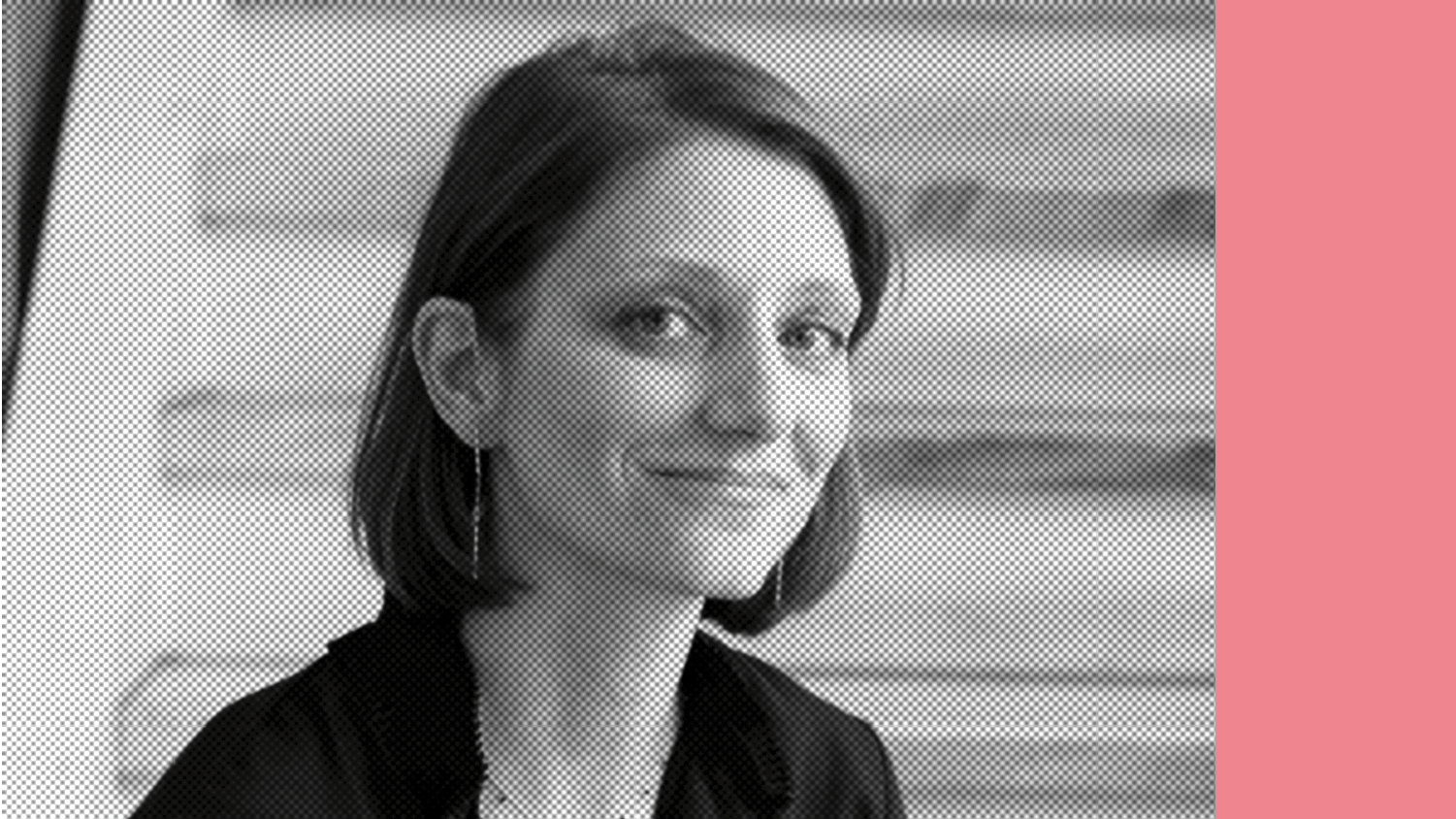
Vanessa Rose
President & CEO, American Composers Forum
“At American Composers Forum we believe music creators are storytellers. When you engage in their artmaking, you hear and learn their stories and perspectives and share that moment in time. Whether overtly or not, those stories help us learn, grow, engage, and hopefully act.”
Vanessa Rose has been the President & CEO of the American Composers Forum since 2019. For more than a decade, Vanessa has been working with artists and organizations dedicated to living creators, including artist collectives and creative spaces. She has led organizations through significant transitions: establishing new leadership positions, building effective planning strategies, clarifying mission-driven priorities, and strengthening racial equity work. Vanessa holds degrees in music performance (violin) and serves as Board Secretary for the Performing Arts Alliance, a coalition of national performing arts advocates.
Q: Who/what inspires you to do this work?
For me, the arts have always been an essential part of my daily life. The ability to connect, feel, express, and transform resonates with my very core. Early on, I discovered that my optimal role – and greatest joy – was creating opportunities for creators and recipients to meet.
Q: Where would you like to see more funding in your creative communities?
Funding for creativity without parameters is always needed; funding can also bring influence – so I’m interested to see how a funding opportunity can change our perception of who/what/how art is created.
Q: Why do you think the (performing) arts have the power to create social change?
At my organization (American Composers Forum), we believe music creators are storytellers. When you are engaged in their artmaking, you are hearing/learning their stories and perspectives, you are joining others with their own stories, and sharing that moment in time. Whether overtly or not, those stories help us learn, grow, engage, and, hopefully, act.
Q: What is a (performing) arts experience that opened your eyes to the power of creativity to repair communities, advance social justice and/ or catalyze change?
There are too many to recount! A recent experience was attending artist PaviElle French’s album release concert. “Sovereign” was her response to the first two years of the pandemic and George Floyd’s murder – from her perspective as a Black artist from St. Paul’s Rondo community. It was raw, powerful, unapologetic, and pierced you with a range of emotions. I witnessed the emphatic responses from others in her community, I observed my own Whiteness, and I heard music and lyrics that was about this time but could be related to too many other moments in history. One couldn’t leave that experience and not be changed, and vow to make change.